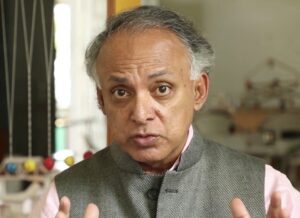Many of the problems the world faces today are the result of a lack of cause-effect thinking including the spirit of enquiry, and creative problem finding and solving. Creativity in the face of complexity is the need of the hour. Simply put, most of us are not aware of the consequences of our actions because 1) we do not have the right thinking tools to act creatively, and to understand and believe that no problem is intractable, and 2) we are not motivated to act creatively and responsibly. To sustain change then, you have to change minds and attitudes fundamentally, which is not possible through our existing teaching-learning methods that rely on chalk-and-talk theory and rote learning.
…The lockdown period and the many don’ts that we continued to follow subsequently have been an eye-opener, telling us that less is sufficient and that we had merely got used to excess in most things. Imagine, we had even got used to air pollution! Faced with a stay-home-or-risk-your-life situation, many of us fell back on what we had all but forgotten – our creativity and our instinct to find joys in the little things. Sure, there was restlessness, worry and fear, but these happened alongside a different sort of unravelling of our minds which made us see things we had forgotten to notice. Rainbows for example, or rivers and blue skies. The music that happens in nature when the sound of traffic dies out. There were reports of sightings of animals in our otherwise urban jungles.
Maybe these were signs that it wasn’t too late yet. Too late for what, some may be wondering. Well, too late to turn back the clock on an environmental disaster that has been in the making through the decades of decadence and will someday choke us human beings out of existence. Sure, it’s not going to be you and me or even our children, but what about their children and their children’s children? Does the possibility of their existence in a cold world not disturb us, or does it sound dystopian, the stuff of science fiction… Read the full introduction to the series here.
In an effort to understand what leaders at various organisations are doing towards making a sustainable world a reality, CauseBecause reached out to them and asked what they can do to make sustainable living a way of life and how do they see their role as individuals as well as leaders in organisations. The participants include:
Anirban Ghosh, Mahindra
Gayatri Divecha, Godrej
Rajiv Williams, Jindal Stainless
Ramji Raghavan, Agastya International
Rashmi Soni, Vistara
Shalini Singh, Tata Power
Vijay Sethi, Hero MotoCorp
Vikram Gulati, Toyota Kirloskar Motor
We – that is, 1,600 members of the Agastya team – are triggering fundamental behavioural shifts in millions of students and schoolteachers through experiential learning. These shifts are from: yes to why, looking to learning to observe, passiveness to learning to explore, textbook-bound to hands-on, and fear to confidence. We are helping children and teachers form questioning, observant, active, caring and confident minds that can help/are helping to build a more sustainable world.
Our experiential learning approach induces critical thinking, creativity and collaborative skills in children and teachers, guiding them to become innovators and problem solvers in their communities. With our holistic learning approaches, our students learn to actively participate and become change agents. They contribute with their actions, instead of being passive citizens.
“As leaders/decision makers
We are continuing to build new and visionary models of learning that will increasingly rely on blended learning – that is, blending physical with digital learning. As the world copes with the pandemic, we have found multiple ways to engage with our beneficiaries digitally amidst the lockdown. We are using technology for continuing our work and it has enabled us to reach more beneficiaries at a lower cost per beneficiary.
As early as 2000, when we bought 172 acres of barren wasteland located about two hours away from Bengaluru, we had a vision to create an ecological preserve. That vision has become a reality, with the wasteland transforming into a medicinal park with several hundred endemic, near-extinct and extinct species of plants showing significant growth and enriching the biodiversity of the land. Our campus is self-sustaining and uses renewable energy (solar) as well as farming to meet some of the needs. We also follow the 5 Rs: refuse, reduce, reuse, repurpose, recycle. Our Art Labs and Science Labs reuse discarded materials in new and innovative ways.

Ramji Raghavan is Founder-Chairperson, Agastya International Foundation
More than anything, the eco regeneration of the campus, which has been documented by a team of scientists from the Indian Institute of Science, is a powerful metaphor for regenerating the mind and creating a new attitude and vision towards living sustainably on earth. The campus example has also spread and triggered the development of eco gardens in many of our science centres.

